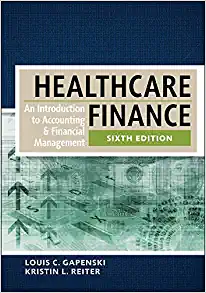Question
Q1: Index Models: Version A: Download 61 months (September 2010 to September 2015) of monthly data for the SPDR S&P 500 Index ETF (symbol =
-
Q1: Index Models: Version A:
Download 61 months (September 2010 to September 2015) of monthly data for the SPDR S&P 500 Index ETF (symbol = SPY). Download 61 months (September 2010 to September 2015) of Apple Inc. data (symbol = AAPL) and 61 months (September 2010 to September 2015) of Berkshire Hathaway Inc. data (symbol = BRK-B). Download 61 months (September 2010 to September 2015) of iShares 13 Year Treasury Bond ETF data (symbol = SHY).Be sure to use end-of-month data!Construct the following on a spreadsheet:
1. Calculate 60 months of returns for the SPDR S&P 500 Index ETF, Apple, Berkshire Hathaway, and the iShares 13 Year Treasury Bond ETF. (Please compute simple monthly returns not continuously compounded returns.) Use October 2010 to September 2015. Note this means you need price data for September 2010. On the answer sheet report the average monthly returns for the SPDR S&P 500 Index ETF, Apple, Berkshire Hathaway, and the iShares 13 Year Treasury Bond ETF.
2. Calculate excess returns for the SPDR S&P 500 Index ETF, Apple and Berkshire Hathaway. Use the monthly returns on the iShares 13 Year Treasury Bond ETF as your monthly riskfree return. On the answer sheet report the average monthly excess returns for the SPDR S&P 500 Index ETF, Apple and Berkshire Hathaway.
3. Regress excess Apple returns on the excess SPDR S&P 500 Index ETF returns and report, on the answer sheet, , , the r-square and whether and are different from zero at the 10% level of significance. Briefly explain your inference.
4. Use equation 8.10 to decompose total risk for Apple into systematic risk and firm-specific risk. That is, calculate total risk, systematic risk and firm-specific risk for Apple.
5. Regress excess Berkshire Hathaway returns on the excess SPDR S&P 500 Index ETF returns and report, on the answer sheet, , , the r-square and whether and are different from zero at the 10% level of significance. Briefly explain your inference.
6. Use equation 8.10 to decompose total risk for Berkshire Hathaway into systematic risk and firm-specific risk. That is, calculate total risk, systematic risk and firm-specific risk for Berkshire Hathaway.
7. Use equation 8.10 to estimate the covariance and correlation of Apple and Berkshire Hathaway excess returns.
QUESTION 2
-
Q2: CAPM and APT:
1. The expected rate of return on the market portfolio is 9.50% and the riskfree rate of return is 1.00%. The standard deviation of the market portfolio is 17.75%. What is the representative investors average degree of risk aversion?
2. Stock A has a beta of 1.90 and a standard deviation of return of 36%. Stock B has a beta of 3.95 and a standard deviation of return of 68%. Assume that you form a portfolio that is 60% invested in Stock A and 40% invested in Stock B. Using the information in question 1, according to CAPM, what is the expected rate of return on your portfolio?
3. Using the information in questions 1 and 2, what is your best estimate of the correlation between stocks A and B?
4. Your forecasting model projects an expected return of 17.50% for Stock A and an expected return of 33.75% for Stock B. Using the information in questions 1 and 2 and your forecasted expected returns, what is your best estimate of the alpha of your portfolio when using CAPM to determine a fair level of expected return?
5. A different analyst uses a twofactor APT model to evaluate expected returns and risk. The risk premiums on the factor 1 and factor 2 portfolios are 4.25% and 2.40%, respectively, while the riskfree rate of return remains at 1.00%. According to this APT analyst, your portfolio formed in question 2 has a beta on factor 1 of 3.95 and a beta on factor 2 of 3.25. According to APT, what is the expected return on your portfolio if no arbitrage opportunities exist?
6. Now assume that your forecasting model of question 4 accurately projects the expected return of Stocks A and B and therefore your portfolio, and that the APT model of question 5 describes the fair rate of return for your portfolio. Do any arbitrage opportunities exist? If yes, would you invest long or short in your portfolio constructed in question 2?
Step by Step Solution
There are 3 Steps involved in it
Step: 1

Get Instant Access to Expert-Tailored Solutions
See step-by-step solutions with expert insights and AI powered tools for academic success
Step: 2

Step: 3

Ace Your Homework with AI
Get the answers you need in no time with our AI-driven, step-by-step assistance
Get Started


